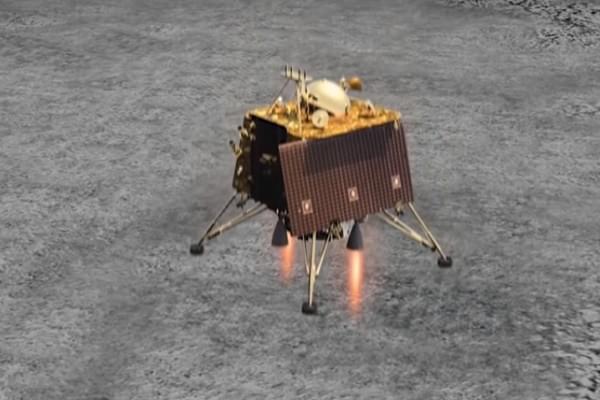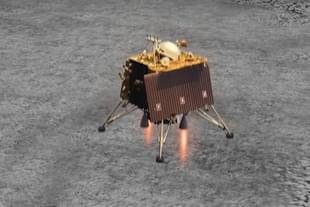Insta
NASA Fails To Capture Vikram Lander On Lunar Surface, Says It May Be Outside The Area Photographed
IANS
Oct 24, 2019, 01:56 PM | Updated 01:56 PM IST
Save & read from anywhere!
Bookmark stories for easy access on any device or the Swarajya app.


US Space agency National Aeronautics and Space Administration (NASA) has once again failed to trace Chandrayaan 2's Vikram lander on the lunar surface.
A NASA spacecraft clicked photos of the landing site of Vikram earlier this month, but could not capture the lander.
A NASA scientist said the spacecraft failed to trace Vikram because of two reasons -- one, Vikram is located outside the area the US agency photographed, second, because it is lying in a shadowed part of the moon.
On 22 July, the Rs 978-crore Chandrayaan-2 was launched into space by India's heavy lift rocket Geosynchronous Satellite Launch Vehicle-Mark III (GSLV Mk III) in a text book style.
The Chandrayaan-2 spacecraft comprised three segments -- the Orbiter (weighing 2,379 kg, eight payloads), Vikram (1,471 kg, four payloads) and Pragyan (27 kg, two payloads).
After five earth-bound orbit raising activities, Chandrayaan-2 was inserted into the lunar orbit. On 2 September, Vikram separated from the orbiter. It made a historic landing attempt on 7 September.
According to NASA, Vikram attempted a landing on a small patch of lunar highland smooth plains between Simpelius N and Manzinus C craters.
This event was India's first attempt at a soft landing on the moon.
The US agency said Vikram's targeted landing site was located about 600 kilometres (370 miles) from the south pole in a relatively ancient terrain (70.8AoS latitude, 23.5AoE longitude).
According to NASA, Vikram had a hard landing and the precise location of the spacecraft in the lunar highlands has yet to be determined.
(This story has been published from a wire agency feed without modifications to the text. Only the headline has been changed.)





